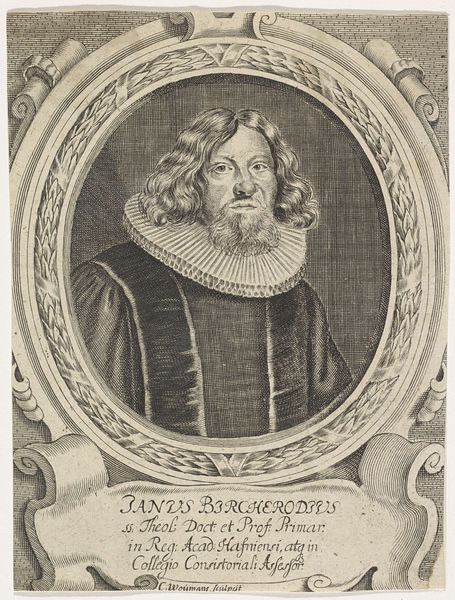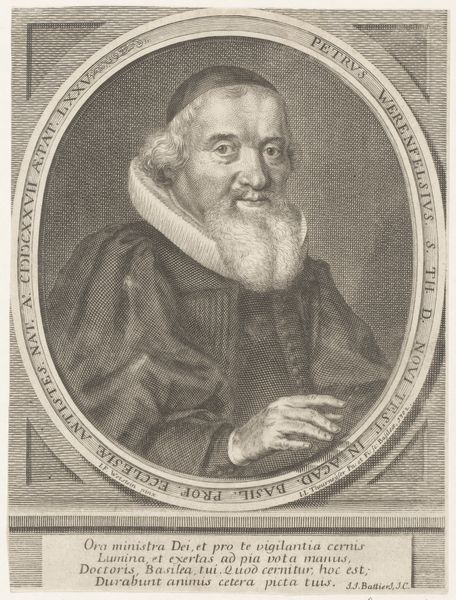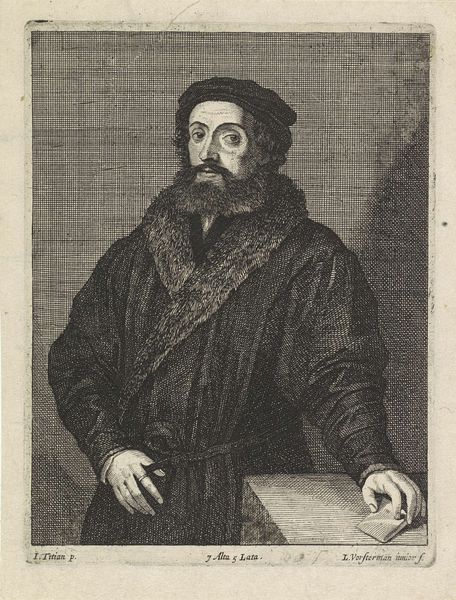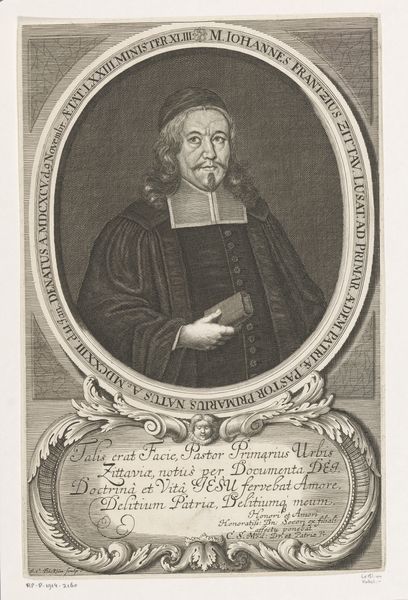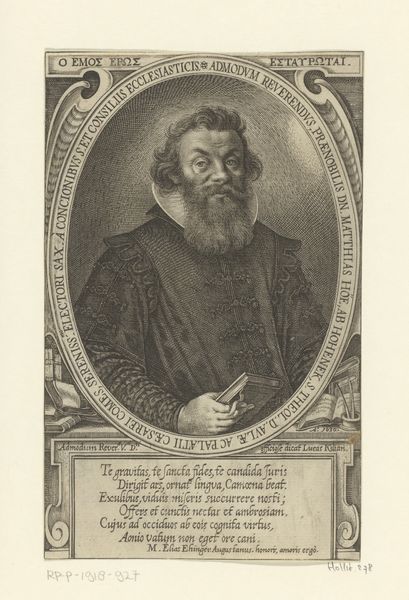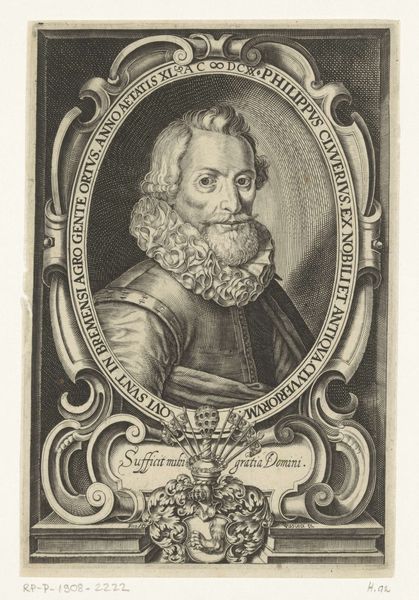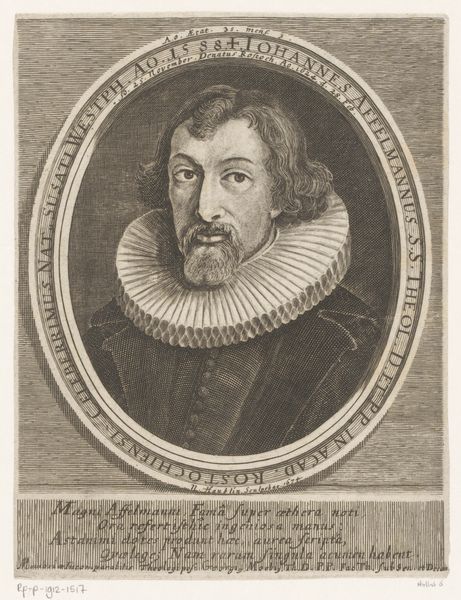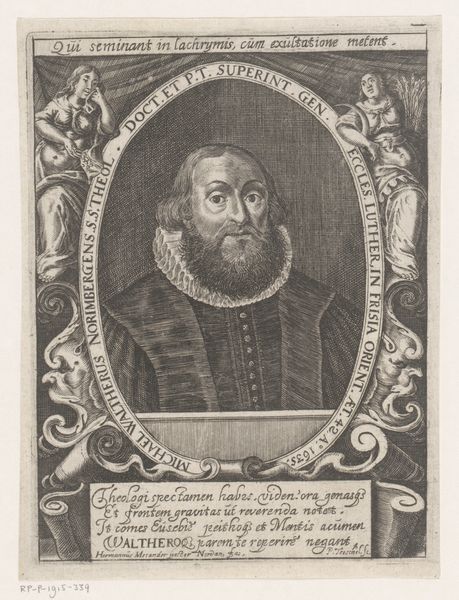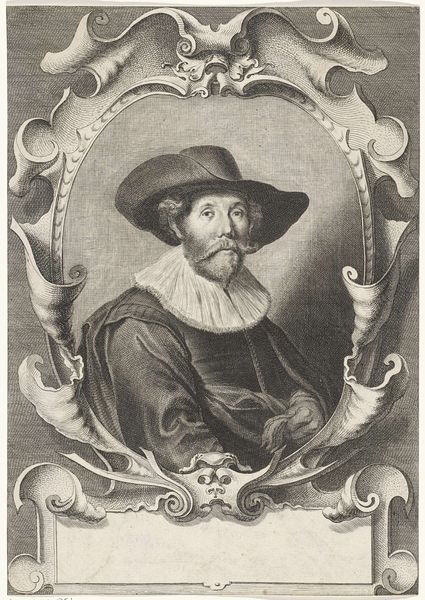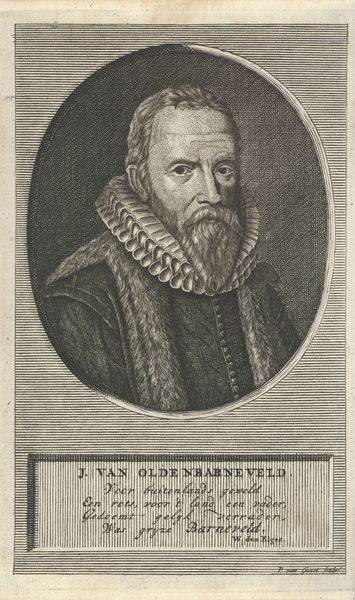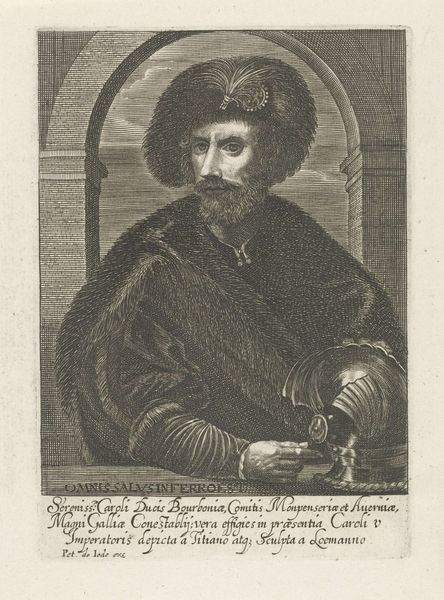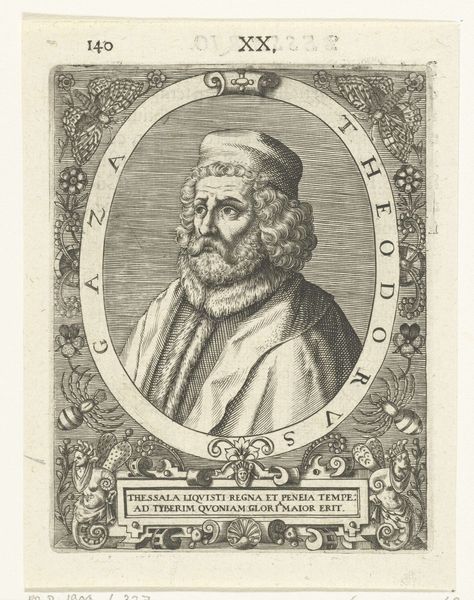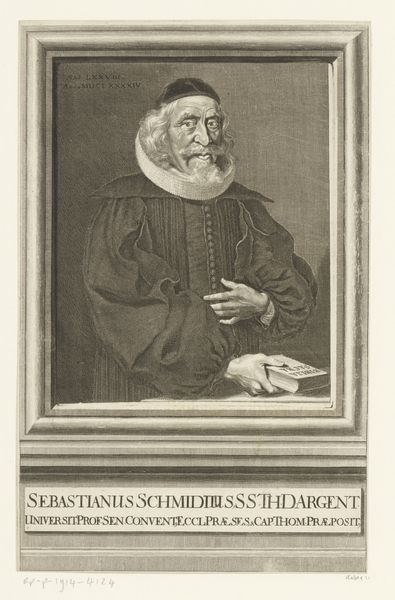
print, engraving
#
portrait
#
baroque
#
dutch-golden-age
# print
#
old engraving style
#
figuration
#
historical photography
#
history-painting
#
academic-art
#
engraving
#
miniature
Dimensions: height 350 mm, width 240 mm
Copyright: Rijks Museum: Open Domain
Curator: Let's discuss this print, "Portret van Aye Juda Löb Kalisch," dating back to 1709. It's held here at the Rijksmuseum, created by Jacob Folkema using engraving techniques. Editor: Initially, what strikes me is the somber mood. The restricted tonal range creates an air of gravitas, almost severity. The oval composition, while traditional, confines the subject, adding to the intensity. Curator: Absolutely. Knowing that Aye Juda Löb Kalisch was a prominent rabbi and scholar of his time deepens this sense of gravity. The text surrounding the portrait, written in Hebrew, acts as both a frame and a testament to his stature within the Jewish community of Amsterdam. We have to consider this imagery in the context of the community, but also within the larger history of tolerance for the Jewish community of Amsterdam and beyond, in an increasingly connected, globally traded world. Editor: Yes, the semiotic weight is considerable. Observe the book he holds—a symbol of knowledge and authority, rendered with meticulous detail. Note how the lines converge to direct our gaze toward his face. His clothing too reflects this. Every single mark, however minute, builds meaning. Curator: Beyond formal elements, this print also invites questions of identity. The very act of commissioning a portrait speaks to Kalisch’s position within a society negotiating its relationship with difference. How was he seen, and how did he wish to be seen within both his religious community and the broader Dutch society? What's more, consider how the printing and circulation of such portraits allowed the propagation of specific idealized images of Jewish leaders. Editor: Interesting, yes, you are asking what meaning it might give to those who viewed it, outside those depicted. Zooming out again to composition—notice the lines that create fabric—these direct your eye across the image to focus on certain textures which give detail and therefore significance. It might highlight how such engravings provided a standardized means for disseminating images, democratizing portraiture. Curator: Precisely. Examining its broader social implications, we can consider the function and agency that this print provided for creating notions of identity in times when religious identity could come at such a high risk. Editor: After examining Folkema's portrait, I feel it rewards close observation. It's far more intricate than its first impression suggests. Curator: Indeed. And, situating this print within broader histories of identity formation helps us understand how visual culture participates in shaping power dynamics, social perception, and communal identity.
Comments
No comments
Be the first to comment and join the conversation on the ultimate creative platform.
